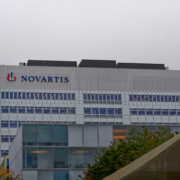Investing in the future means investing in data
Investing in the future means investing in data
By Maria Fontanazza
Although the pandemic gave a boost to the drug discovery market, accelerated development in the market will be influenced by effective use of data and analytics. “Lifesciences organizations are eager to move forward in what they do with increased speed and efficiency, but they are stuck in a loop between wanting to invest and lacking the necessary investment and integration to do so,” states the recent industry report from ArisGlobal, “State of Automation, Artificial Intelligence and Data in Life Sciences”. Mike Gordon, CEO of ArisGlobal, shares thoughts on the challenges the industry has faced in accelerating drug development and what’s the next step: embracing automation.
Med Ad News: As the industry emerges from the worst of the COVID pandemic, how are lifescience companies applying lessons learned to prompt market growth?
Mike Gordon: A few major lessons came out of the COVID pandemic, but I believe that one of the biggest takeaways that the wider life sciences and healthcare community has seen is that pharmacovigilance has shifted to a front-and-center topic of conversation. People within the industry have known pharmacovigilance’s crucial role in the drug development cycle; for a long time it was considered a must-have “cost center”. That thought has now changed into PV being a key strategic area that can heavily change the outcomes of the therapies being developed, and even inform what’s next. Companies are investing and emphasizing in this area of drug development more, which is a great thing for health.
An additional lesson that was learned was around this concept of “warp-speed” drug development, which we saw with COVID vaccine development. While that was a pandemic-size example of accelerating drug development, there are many other, smaller scale ways that lifesciences companies can safely speed up drug development with technology, with steadily growing capabilities in automation that are able to save thousands of hours and intelligent data analytics to drive effective and applicable insights.
Med Ad News: The use of data in drug development continues to grow. How should companies be using data analysis to generate insights that lead to better outcomes, lower risk, and reduced costs?
Gordon: Data is only powerful when leveraged. Despite data becoming an ever-growing aspect of drug development, in practice, lifesciences organizations trail industries in utilizing the information drawn from that data.
The lifesciences industry must embrace data and analytics as the next step in its transformation. Companies can connect and leverage real-world data (RWD) and real-world evidence (RWE) from their studies and, through analysis, build better insights, leading to better outcomes and lower risk.
In addition, adopting automation technology for the manual aspects of drug development increases data accuracy and effectiveness, giving organizations an edge in this competitive space and freeing up resources to focus more on insight-driven changes.
Med Ad News: As companies explore the use of advanced automation technology such as artificial intelligence and machine learning, what are the stumbling blocks, and how are companies navigating?
Gordon: We recently published our 2022 Industry Report, which revealed that companies noted a four percent rise in automation usage, bringing the number to 72 percent of companies using some form of automation. However, there’s a marked difference in the type of automation that companies are embracing; McKinsey reports that only 31 percent of businesses across all industries have fully automated at least one function. The report also found that 38 percent of organizations are not utilizing advanced automation or AI for research and development, most of them being in the emerging market.
Why does this happen? Half of the organizations surveyed listed interfacing with solutions as the main stumbling block. Other barriers included a lack of resources dedicated to building a business case, difficulty integrating with existing technology and solutions, and budgetary concern; organizations believe a sizable investment is necessary for success.
Larger organizations are adopting advanced automation and AI at a faster rate and grander scale than smaller ones, but all organizations benefit. What results say is clear for them: automation, advanced or basic, are valuable to increase efficiency and reduce overall costs. Our own customer feedback reflects the same with companies seeing 40 percent+ savings.
| Maria Fontanazza is director of content, PharmaLive and Med Ad News. |












